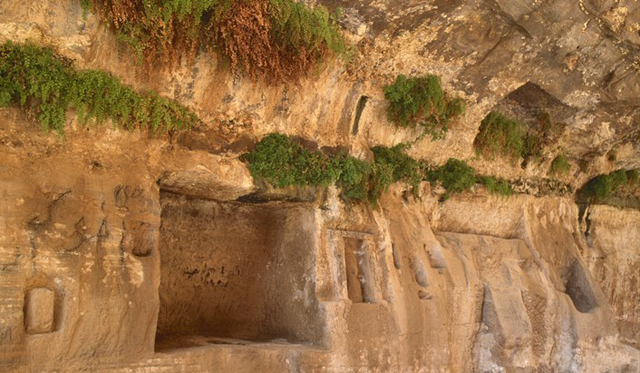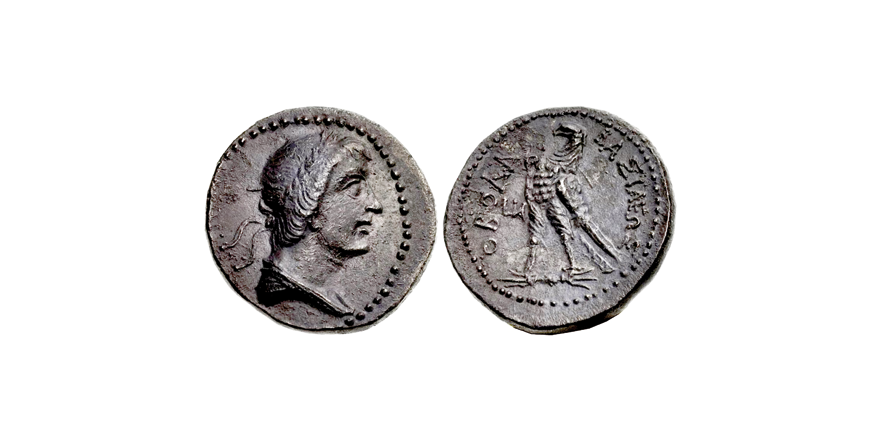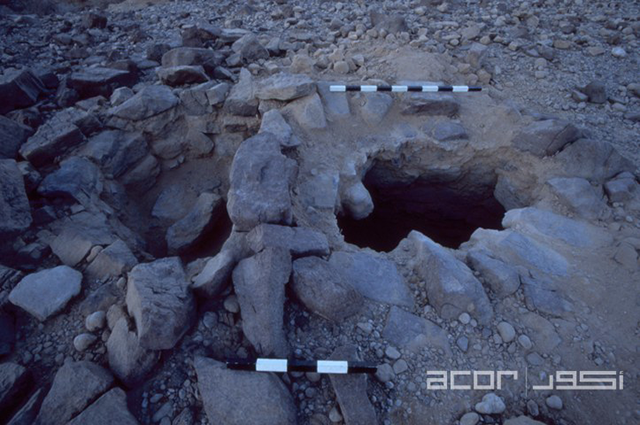You are here
Understanding Nabataean religion through architecture
By Saeb Rawashdeh - Oct 20,2024 - Last updated at Oct 20,2024

Qattar ad-Deir , niches (Photo courtesy of ACOR)
AMMAN — For the past decades, scholars tried to figure out the Nabataean religious practice and the Nabataean pantheon.
What characterises the Nabataean religious architecture are both rock-cut and built structures that form a cultic infrastructure. These temples and small shrines were meant to strengthen religious, social and political unity of the Nabataean Kingdom.
The first and often underestimated distinction to be made is chronological. As many surviving Nabataean temples were built after the Roman annexation, they should be understood as local or indigenous architecture, flourishing in a legal and religious frame agreed, if not actually defined, by the Roman authorities, within a newly created province, said the scholar Laurent Tholbecq from the University of Brussels.
According to Tholbecq, there is another important distinction that should be pointed out: instead of categorising worship into public and private expressions, as seen in the Roman context, it can be differentiated between social and political religious expressions. While this distinction may appear ambiguous, it is nonetheless significant.
"The term ‘social expressions’ covers here all the religious spaces linked to specific groups, i.e., family-based, tribal, or professionally-linked groups; While the term 'political expression' being associated with what could be called," Tholbecq said, adding that state sanctuaries were directly linked to the Nabataean Royal family.
“State sanctuaries,” specifically linked to the Nabataean royal power. Both these categories respond to specific needs which therefore imply specific architectural forms, with both systems remaining in a meaningful interaction, the professor continued.
One of such religious structures is the "Obodas Chapel," which dates from the heydays of the Nabataean Kingdom in the 2nd century BC. Archeologists suggest that the chapel was used for family gatherings, as it is suggested by findings of animal bones from banquets.
"This religious venue was subsequently enlarged and transformed twice, first in the mid-1st century BC until the beginning of the 1st century AD, and it was finally abandoned soon after the Roman annexation in 106 AD," Tholbecq underlined, adding that the dedication of a statue of “Obodas the God,” dated back to 20 BC and linked to the largest rock-cut triclinium of the area, provides important information about the antiquity of the site, occupied by the same family or tribe, during at least five generations, before this dedication was made.
Specifically, the dedication mentions Peṭamūn, the founder of the sanctuary in the mid- to late 2nd cent AD; and indicates that the great-grandfather of the dedicants worshipped there a Nabataean god, Dusara, the “God of the Place.”
The complex, which incorporates a few cultic niches, two fragments of Nabataean religious inscriptions and small altars, features the usual infrastructures linked to banqueting installations (bi- and triclinia), a cistern, and, in this case, for the 1st century BC complex, a small room provided with table-benches used to accommodate the meals, and a storage room.
"Considering its isolation and the possibility to block its access through a closing porch, the 'Obodas Chapel' constitutes an excellent example of private Nabataean – in this case family-based or tribal – gathering place of which other unexcavated examples are known”, Tholbecq said, adding that “It is one of the numerous cultic places distributed within Petra’s suburbs and apparently visited by exclusive groups of worshippers."
Related Articles
AMMAN — For years, the French Archaeological Mission in Petra has been active in excavating tombs, chapels, temples and other remains of the
AMMAN — The Nabataean social structure revolved around the family, clan and tribe, and it can traced back the Nabataean nomadic past.
AMMAN — The evidence gathered from Petra, the Negev Desert and Dead Sea region proved the presence of Nabataean culture long after 2nd centu

















